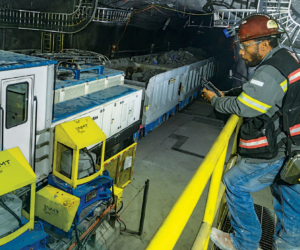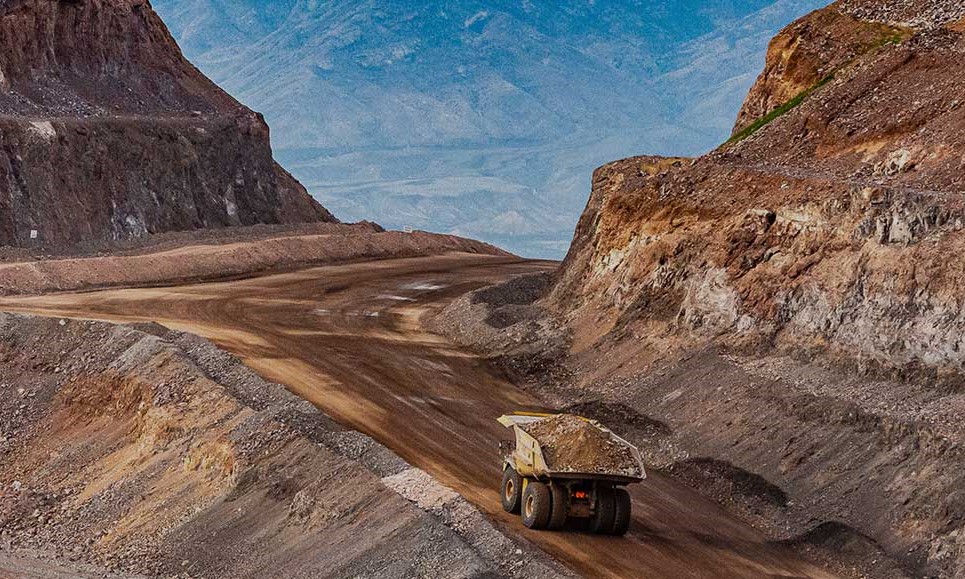Freeport-McMoRan Inc has announced the publication of its updated 2020 Climate Report which details the work underway across its global business to reduce greenhouse gas (GHG) emissions, improve energy efficiency, advance the use of renewable energy and understand and enhance the company’s resilience to future climate-related risks. With the publication of this report, it also announced a new 30% GHG emissions reduction target for its Indonesian operations (PT-FI which operates Grasberg) by 2030, versus a 2018 baseline. Today, PT-FI represents roughly 50% of Freeport’s global Scope 1 emissions. For the Americas it has already said it is looking to achieve an additional 15% reduction in carbon emissions per metric tonne of copper produced in the Americas by 2030.
Richard C. Adkerson, Chairman of the Board and Chief Executive Officer stated: “This target furthers our resolve to reduce our GHG emissions…today, we believe we have a clear view of the primary challenges to achieve net zero GHG emissions across our various operating regions. For example, there is not yet a commercially viable alternative to the diesel-fueled haul trucks critical to our global open-pit mining operations. In Indonesia, we are challenged to shift away from coal for reliable electricity production in the short-to-medium term given, among other things, the remote nature of our operations.”
Interestingly, Freeport is making an interim move to deploy diesel-electric drive ultraclass mining trucks at its North and South American sites – while these trucks are part of the norm in mining already, to date Freeport operations have been dominated by Caterpillar mechanical drive trucks and it is also an acceptance that any future decision to further deploy electrification to truck fleets including via retrofits, will be a lot easier with an existing diesel electric fleet. Its Americas mines include copper mines Cerro Verde in Peru and El Abra in Chile then the US copper and moly operations – Bagdad, Chino, Climax, Henderson, Morenci, Safford and Tyrone.
The company will start with Cerro Verde in Peru: “At our Americas operations, we are evaluating diesel-electric, ultra-class haul trucks to potentially integrate into our decarbonisation roadmap for our open-pit mines. These high-payload-capacity, diesel-electric haul trucks can provide immediate benefits such as reduced unit costs, increased load capacity, and reduced energy consumption and GHG emissions. They also can provide us with a more flexible platform for the future. In order to evaluate performance, we have made commitments to trial and commission both Komatsu and Caterpillar 400-ton class diesel-electric trucks at our Cerro Verde operations in Peru, starting in early 2022.” This would equate to Komatsu 980E and Caterpillar 798 truck models.
Truck fleet optimisation
It also highlighted its existing work on truck fleet optimisation in contributing to lower emissions. “Over the last decade, we have become leaders in asset optimisation – maximising the lives of our haul trucks and enabling each truck to operate well beyond the industry average. At our Americas operations, we measure each haul truck’s actual cycle-time versus the plan and provide suggestions for improvement. Better haul truck cycle-times can help decrease the number of haul trucks required to move material. Fewer haul trucks mean lower capital, operational and energy expenditures, which can also result in lower GHG emissions. Further, over the last two years, Freeport has deployed a unique Haul Truck Operator Scorecard (HTOS) system to engage and involve our equipment operators in solutions. By putting the operational data collected by the HTOS directly in the hands of our operators, they are better able to gauge and improve their day-to-day performance by adjusting their driving practices, increasing safety and saving time.
Expanding underground electrification at PT-FI
As its Grasberg operations transitioned from open-pit to underground mining operations, PT-FI designed and built an autonomous electric train system to move ore through underground tunnels rather than traditional, diesel powered trucks. The GBC mine is planned to be the largest block caving operation in the world with a sustained peak capacity of 130,000 t per day. The GBC is ramping up, with current production rates in second quarter 2021 averaging 64,400 t per day as well as days with production over 100,000 t per day. The GBC was designed and built with an electrified rail haulage system. This ultimately will consist of just over 14 miles of underground track, an overhead catenary system (OCS) and pantographs mounted on the locomotives. The locomotives also have onboard batteries that are used in locations where the OCS cannot be deployed. The batteries recharge when the locomotive reconnects to the OCS system. Each train consists of one, 30 t locomotive and 11 ore cars. There are currently six trains operating with a plan for 14 at peak production.

Each train can carry around 300 t of ore per trip, which is the equivalent of a surface haul truck. The trains are fully autonomous and drive themselves to and from the loading chutes and unloading stations. The ore cars are loaded remotely by operators at a surface control room. This is a highly efficient method of gathering the mined ore and transporting it to the crushers, and this method greatly reduces the ventilation loading that would have been present with a fleet of 50-60 t diesel underground trucks performing the same task. Finally, from a carbon perspective, this results in an approximately 80,000 t net reduction in CO2 equivalent per year (excluding Scope 3 and at full capacity) versus a comparable fleet of diesel trucks designed to do the same task. “As we move forward, we also plan to look for opportunities to electrify additional underground equipment at PT-FI and ancillary equipment at our sites in the Americas.”
The power generation plan for Indonesia
PT-FI’s operations are located in the Grasberg mineral district, one of the world’s largest copper and gold deposits, in the province of Papua, Indonesia. The operating area is accessible from our Amamapare port facility at the Arafura Sea and the city of Timika’s local airport. PT-FI’s underground ore bodies range in elevation between 2,590 and 3,110 m above sea level and include a 70-mile service road from the port facility in the Lowlands to the mill complex in the Highlands. The high elevation and remote location create a challenging environment for delivery of reliable power.
The company stated: “Currently, PT-FI’s electrical power is primarily supplied by our coal-fired power plant, with an installed capacity of 198 MW, which was built in 1998. Diesel generators, with an installed capacity of 130 MW, provide peak andbackup capacity. Due to the high carbon intensity of coal-fired electricity, in 2020, PT-FI’s operations generated approximately 30% of our global absolute GHG emissions and approximately 50% of our global Scope 1 emissions.”
In 2020, the ramp-up of underground production at the Grasberg Block Cave (GBC) and Deep Mill Level Zone (DMLZ) underground mines advanced, following completion of mining the Grasberg open-pit in 2019. As the ramp-up of the GBC and DMLZ underground operation reaches full capacity, PT-FI expects its average power demand to increase by 50 MW to a total of 270 MW annually (from a 2018 baseline year average of 220 MW) for underground air ventilation and additional processing of the orebodies.
“To support the additional energy requirements, PT-FI identified an opportunity to integrate a lower carbon power source at our operations with the development of a dual fuel power plant (DFPP) at our Arafura Sea port facility at Amamapare. The DFPP is currently under construction and will have an installed capacity of 129 MW which will provide the additional power we believe is necessary for our operations as well as enable us to transition our older diesel generation equipment at the mill to backup status (from providing approximately 18% of our total power in our 2018 baseline year). Absent any unexpected delays, the DFPP is expected to be completed in the first half of 2022.”
The DFPP is designed using high-efficiency dual fuel reciprocating engines on a flexible platform that can operate on either diesel fuel or natural gas, providing PT-FI future optionality to adjust the fuel type and increase plant capacity as we seek to reduce our Scope 1 emissions by transitioning to a fuel with lower GHG emissions than coal. While the necessary infrastructure to deliver natural gas has not yet been developed, the PT-FI team is studying various options. PT-FI will initially use domestically produced biodiesel for the DFPP, as mandated by the government of Indonesia; however, it plans to evaluate other options in the future including LNG.
Collaborating for innovation
Freeport adds that it recognises that mining companies and Original Equipment Manufacturers (OEMs) must work together collaboratively in order to develop and advance technologies that will support industry-wide decarbonisation. Freeport says it is actively leveraging its existing strategic partnerships with its OEMs to better understand their emissions goals and objectives for haulage as well as other critical equipment. “For example, we are actively engaged with a number of consortiums that bring together industry leaders with OEMs to work together to develop innovate solutions. In 2021, we joined The Charge on Innovation Challenge (The Challenge) as a patron supporter. The Challenge is a global competition expected to drive technology innovators across all industries to develop new concepts and solutions for large-scale haul truck electrification systems aimed at significantly cutting emissions from surface mining. The Challenge also aims to demonstrate an emerging market for charging solutions in mining, accelerate commercialisation of solutions and integrate innovations from other industries into the mining sector.”
Through its membership in ICMM, it also participates in the Innovation for Cleaner, Safer Vehicles (ICSV) initiative. The goal of the ICSV is to accelerate the development of a new generation of mining vehicles and improve existing ones in order to introduce GHG emission-free surface mining vehicles by 2040, to minimise the operational impact of diesel exhaust by 2025 and to develop vehicle collision avoidance technology for the mining industry by 2025. Freeport has also joined two consortiums in South America, H2-Chile and H2-Peru, which are both collaborative efforts between public, private and academic entities focused on enabling the use of hydrogen in haul trucks.











